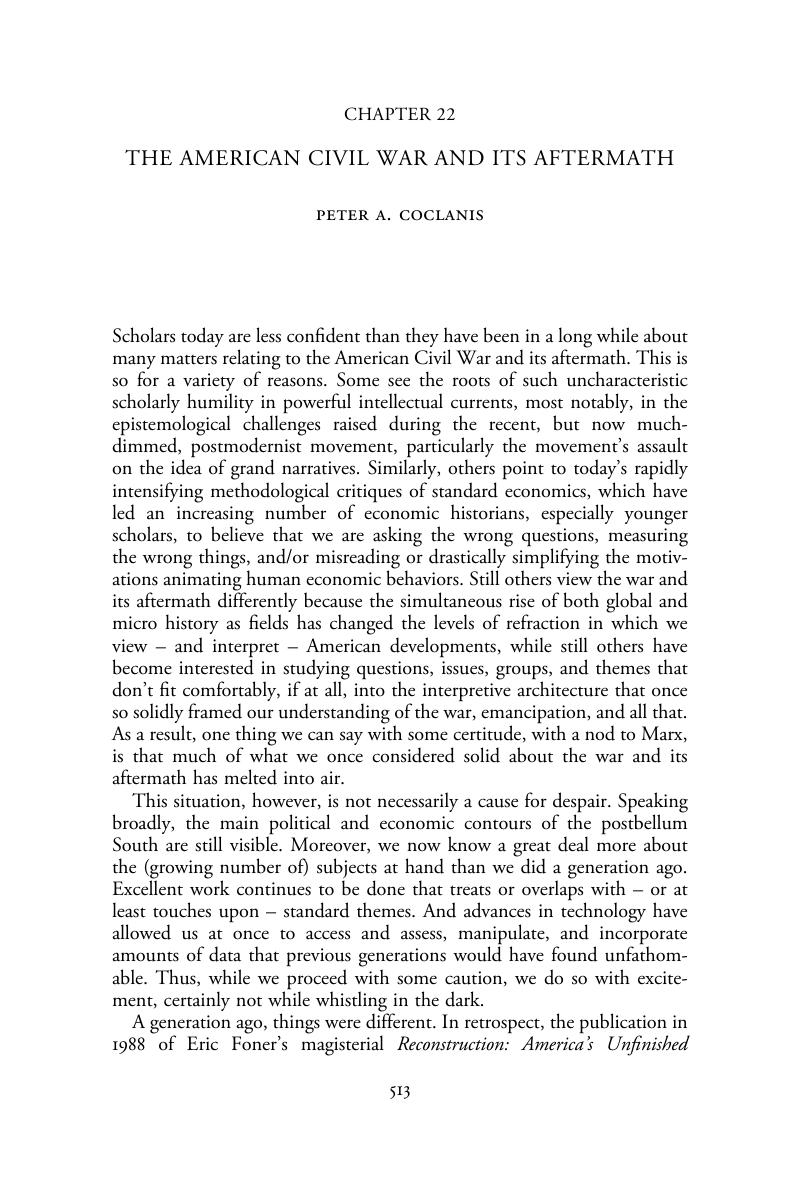Book contents
- The Cambridge World History of SlaveryVolume 4: AD 1804–AD 2016
- The Cambridge World History of Slavery
- The Cambridge World History of Slavery
- Copyright page
- Contents
- Maps
- Figures
- Tables
- Contributors
- Series Editors’ Introduction
- Part I Overview
- Part II Slavery
- Part III Abolition
- Part IV Aftermath
- Chapter 22 The American Civil War and Its Aftermath
- Chapter 23 Dependency and Coercion in East Asian Labor, 1800–1949
- Chapter 24 Gender and Coerced Labor
- Chapter 25 Coerced Labor in Twentieth-Century Africa
- Chapter 26 Indenture in the Long Nineteenth Century
- Chapter 27 Forced Labor in Nazi Germany and the Stalinist Soviet Union
- Chapter 28 Contemporary Coercive Labor Practices – Slavery Today
- Index
- References
Chapter 22 - The American Civil War and Its Aftermath
from Part IV - Aftermath
Published online by Cambridge University Press: 20 April 2017
- The Cambridge World History of SlaveryVolume 4: AD 1804–AD 2016
- The Cambridge World History of Slavery
- The Cambridge World History of Slavery
- Copyright page
- Contents
- Maps
- Figures
- Tables
- Contributors
- Series Editors’ Introduction
- Part I Overview
- Part II Slavery
- Part III Abolition
- Part IV Aftermath
- Chapter 22 The American Civil War and Its Aftermath
- Chapter 23 Dependency and Coercion in East Asian Labor, 1800–1949
- Chapter 24 Gender and Coerced Labor
- Chapter 25 Coerced Labor in Twentieth-Century Africa
- Chapter 26 Indenture in the Long Nineteenth Century
- Chapter 27 Forced Labor in Nazi Germany and the Stalinist Soviet Union
- Chapter 28 Contemporary Coercive Labor Practices – Slavery Today
- Index
- References
Summary

- Type
- Chapter
- Information
- The Cambridge World History of Slavery , pp. 513 - 539Publisher: Cambridge University PressPrint publication year: 2017



